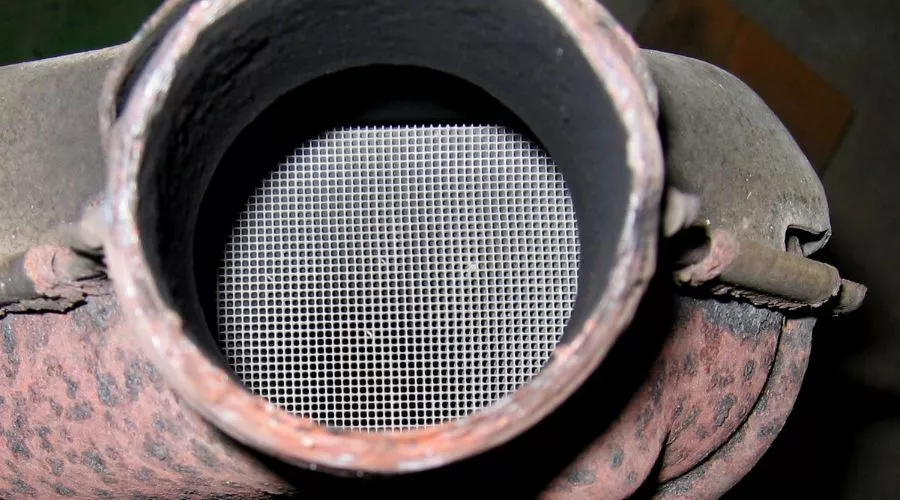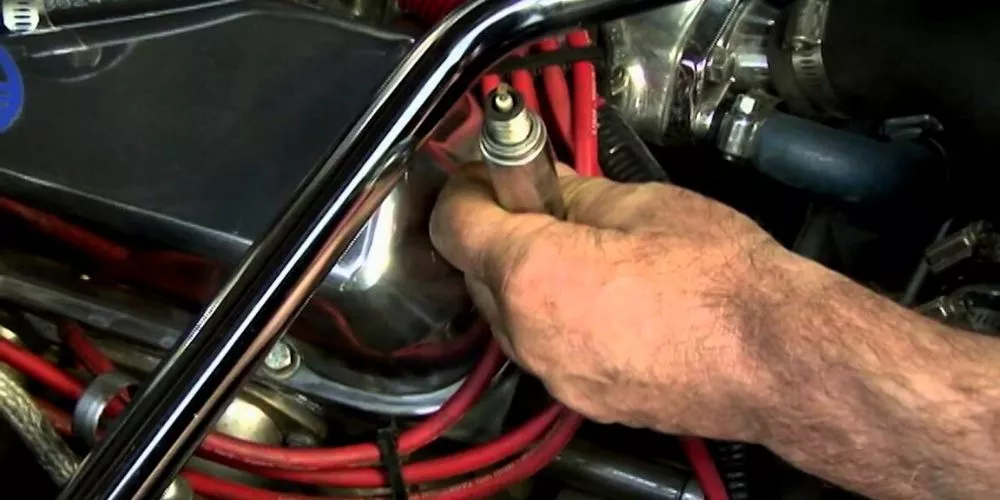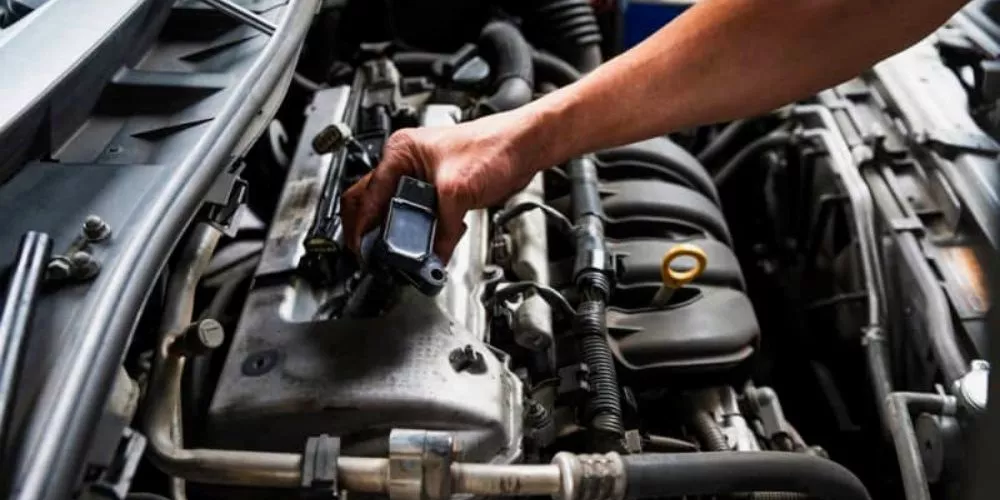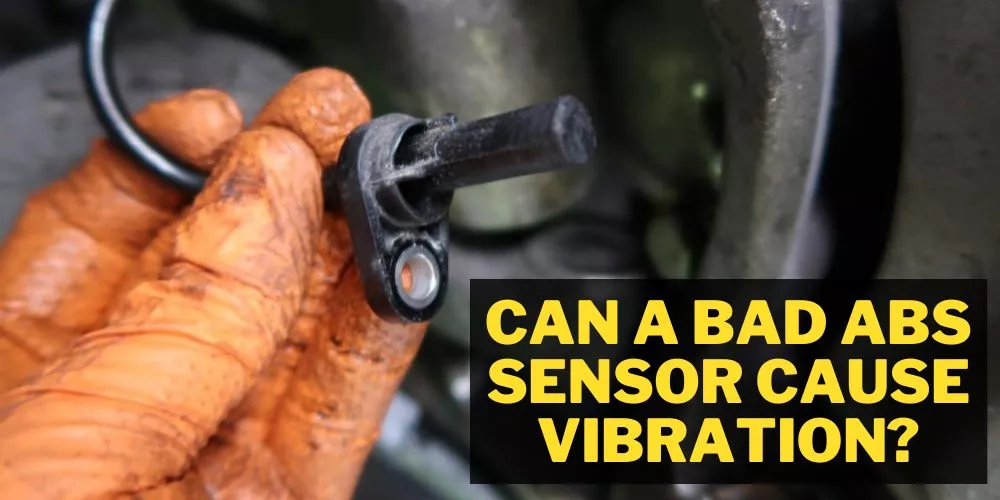You already know that the p0300 code indicates nothing but cylinder misfires in a car. It’s a pretty serious thing, and no one should take it lightly.
But, can a bad catalytic converter cause p0300 code? That’s what we are going to learn here in this article.
A p0300 code can be brought on by a damaged catalytic converter, however this is uncommon. A catalytic converter that becomes constrained may generate enough back pressure to result in a p0300 code.
When Diagnosing this error in your automobile, P0300 is one of the most frequent codes you may see.

One of the hardest codes to diagnose and repair is this one. A car’s engine has identified a problem with one of its cylinders, according to the P0300 code. Either the spark plug is malfunctioning or there is a significant amount of unburned fuel in the engine cylinders when it occurs.
Contents
What causes the p0300 code most frequently?
Several problems in a vehicle can cause a p0300 code. Some most common causes we can face are

- Wiring problems: a broken wire or loose connector can cause wiring problems which will cause a p0300 code.
- Vacuum leaks: damaged vacuum tubes can cause vacuum leaks, Which can cause a p0300 code.
- Ignition system problem: ignition system problem causes the generation of the p0300 code.
- Mechanical issues: mechanical issues of the engine, such as a failed head gasket or a loose timing chain, can cause a p0300 code.
- Emissions equipment problems: emission equipment problems such as lousy exhaust gas circulation or problems with the air injection system can cause a p0300 code.
- Sensor problems: sensor problems such as a bad sensor or mass air flow can cause a p0300 code.
- Computer problems: computer problems such as software needing to update or faulty hardware can cause p0300 code.
- Fuel delivery issues: fuel delivery problems such as a weak fuel pump can cause a p0300 code.
What could cause a p0300 code?
The most common and related cause of p0300 code generation is a damaged or worn sparks plug. A spark plug is a device that escalates the complicated mixture of fuel and air in every cylinder of an internal engine.
When a p0300 code gets triggered, there is a deficit in the fuel amount, which is burnt within the cylinder. Most cars have between six and four cylinders, and each cylinder fires a spark plug smoothly and continuously. Some more causes that can cause a p0300 code are:
- Lekas in vacuum tube: we can see that leaks in vacuum tubes can cause p0300 code generation. The p0300 code can be generated by a broken vacuum tube or an intake gasket that is leaking.
- Wiring problems: wiring problems such as loose connectors can cause p0300 code generation. Broken wires and loose connectors can cause the generation of p0300 code.
- Ignition problem: bad distributor or damaged spark plugs can cause a p0300 code. Bad distributors and spark plugs that are worn can cause this problem.
- Issues of emission equipment: bad exhaust of gas circulation or secondary air injection problems can cause a p0300 code. Emission equipment problems such as air injection and bad exhaust can lead to a p0300 code.
- Mechanical issues: a failed gasket or any mechanical issues can cause a p0300 code. A p0300 code might be caused by a failed gasket or a loose timing change, which is problematic.
- Sensor problems: mass air flow and lousy sensor can cause p0300 code. Bad crankshaft sensors or many other sensor problems can cause a p0300 code. O2 sensors can also cause misfires.
- Computer problems: faulty hardware and not updated software can cause p0300 code. Software should be updated on time; otherwise, it causes computer problems. And it causes a p0300 code.
Can a Bad Catalytic Converter Cause P0300 code
In normal conditions a P0300 code can’t be shown due to a faulty catalytic converter. However, there are instances where it showed this code due to a damaged catalytic converter for many vehicles. So we can’t rule it out completely to be honest.
If your catalytic converter becomes constrained, then it may generate enough back pressure to result in a p0300 code.
How to fix the p0300 code?
P0300 code can be fixed by following some method. Such as
The faulty crankshaft sensor should be replaced to fix the p0300 code.

- Damaged spark plugs should be replaced to fix the p0300 code.
- Vacuum leaks should be repaired to fix the p0300 code.
- Worn or damaged coils and spark plugs should be replaced to fix the p0300 code.
- A faulty camshaft sensor should be replaced to fix the p0300 code.
- Valves and clogged EGR tubes should be repaired and replaced to fix the code.
- Replacement of faulty fuel injector is required to fix the p0300 code.
- The head gasket and leakage are repairs required to fix the problem.
- Replacement of the faulty throttle position sensor is required to fix the p0300 code.
- Replacement of defective mass air flow sensor is necessary to fix the code.
- Replacement of the faulty oxygen sensor is necessary to fix the code.
- Replacement of faulty catalytic converter is required to fix the code.
- If necessary, any internal engine faults should be repaired to fix the problem.
- Replacement of a defective PCM is required, which can fix the code.
- Replacement of the rotor button and distributor cap is necessary to fix the problem.
- Replacement of wires, coils, and plugs, if applied in your vehicle, is necessary to fix the p0300 code.
- If cylinder damage exists, then engine replacement is required to fix the code so the problem can be resolved.
- Diagnosis and fixing of other trouble codes that are related to the p0300 code are needed to fix the code p0300.
How is the p0300 code diagnosed?
Now, we’ll talk about a few ways to identify the p0300 error code. Some methods are:

- We must complete a test drive to determine if the trouble-making p0300 code is back.
- We need to inspect the spark plug coils and wire packs to examine if any damage is causing the generation of the p0300 code.
- To save data relate to freeze frame and all error codes kept by the primary control module, we must use the OBD II scanner. This procedure allows us to identify the p0300 error code.
- We need to check spark plugs for excessive wear, cracks, or breaks, which can diagnose the p0300 code.
- To identify the error code, we must check the connector and harness for breaks and rust in the coil pack.
- We need to inspect cracks or damage for old vehicles with rotor button systems or distributor caps which can diagnose the p0300 code.
- As per the need, replacement of spark plug wires and spark plugs, coil packs, and coil pack wiring for connector or harness is required to diagnose the code.
- After replacing the spark plugs, coil pack, and spark wires, if the p0300 error code still appears repeatedly, the mechanic will check the fuel injector to see if there is a problem. Thus, the p0300 code can be diagnosed.
- If the error code p0300 reappears, we need to verify the compression system. A compressor malfunction is not typical, although it is possible.
- If the p0300 error code continues to appear, there may be a PCM issue. It could be necessary to replace or reprogram it. Thus, the p0300 code can be diagnosed.
- It is essential to repair any related problems that the PCM has saved. Then we need to test drive the vehicle to confirm that the trouble code p033 is gone. Thus we can diagnose the p0300 code.
- We must visually inspect spark plug wires and coil packs for worn or damaged wiring. Thus we can diagnose the p0300 code.
- If the code persists, we need to read live data on the OBD II scanner and need to identify which cylinder is misfiring. Thus we can diagnose the p0300 code.
How much does it cost to fix code p0300?
Spark plug replacement is the most frequent repair type. Tune up is the another name for this. Repairing a four-cylinder engine typically costs $150. The price for six- or eight-cylinder engines rises by roughly $700.

The cylinder of an engine must be repaired using one technique or more in order to resolve the p0300 fault code. Here is a breakdown of the costs.
- The replacement cost of swires of spark plug is around $180-$240.
- The replacement cost of an ignition coil is between $230-$640.
- The replacement cost of the fuel pump is between $1300-$1700.
- The replacement cost of the spark plug is between $40-$640.
- The cost of a fuel gas regulator is between $200-$400.
- The cost of fuel injectors is between $1500-$1900.
- Fix cost of vacuum leakage is between $100-$200.
Can one drive while having a p0300 code?
Code p0300 is considered very serious and has trouble making code. It can cause dangerous issues and damage to the engine, or a catalytic converter is possible. This p0300 code can involve misfires of multiple engines, and it can often appear with multiple misfire codes.
The vehicle should not be driven at this time because the engine can unexpectedly shut off. Fatal damage to the catalytic converter can also occur if this problem is not resolved immediately. So, it is not safe to drive with a p0300 code.
Frequently Asked Questions (FAQs)
Will a clogged catalytic converter throw a p0300 code?
The catalytic converter can cause the p0300 code to misfire due to the inability of the exhaust to breathe correctly, which can cause unburnt exhaust gasses to escalate inside the catalytic converter. A clogged catalytic converter can cause poor fuel economy for the vehicle.
Does the p0300 code clear itself?
When the problem is resolved or no longer detected, the trouble-making, misfiring code p0300 will clear itself after some driving. Most of the misfires go away by themselves and the engine regains average speed. But even if you notice a single misfire, it is a warning symbol and can cause more misfires in the future.
Which sensors can cause misfires?
If the “mass airflow sensor” and “oxygen sensor” fail, it can provide inaccurate data to the computer of the engine and will cause a misfire. If a vacuum line is broken, it can also cause a misfire. A dirty MAF sensor can even cause misfires. A faulty O2 sensor can also cause misfires.
Conclusion
From the above content, we can get information about the p0300 code. We learned that it is a trouble-making code that can cause misfires. When an engine shows a p0300 code, then it is not safe to drive. With the help of some methods, it can be resolved.


